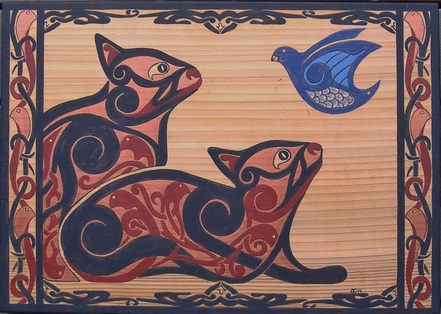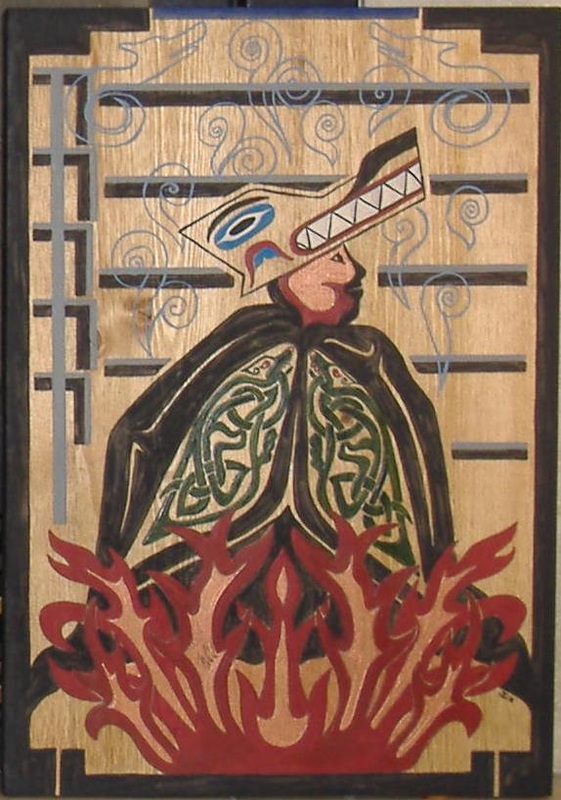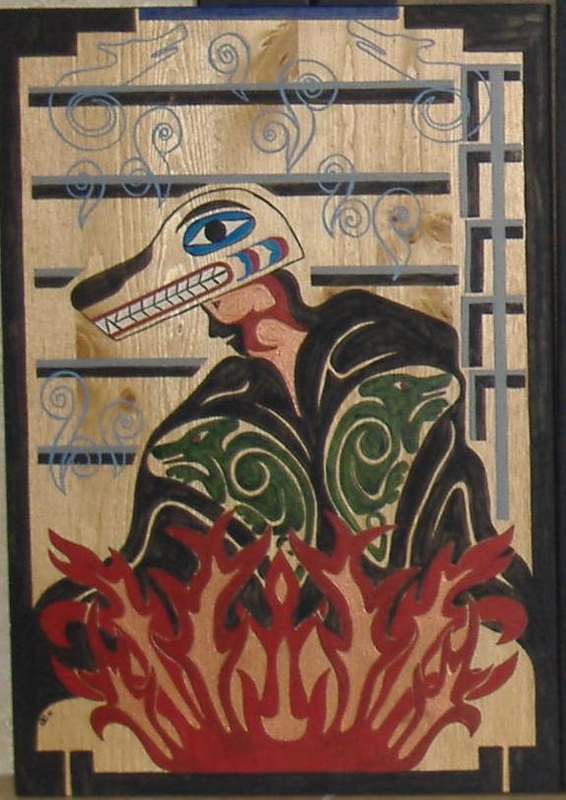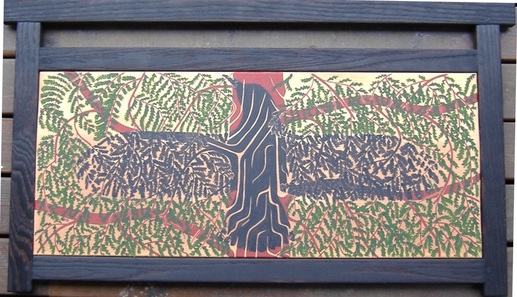The strongest effect of changing light occurs when the sun is going down and sunlight streams into our living room from the west-facing windows. It is so wonderful to watch the sun’s effect as the rays slowly march across the room as sunset approaches. The angle and intensity of the light plays on the art. One of the most amazing effects occurred over a year ago when a perfect circle of sunlight acted like a spotlight to enclose the small bird in my Two Cats Captivated painting. What really astounds me is that the painting was in the dining room down by the floor (where our cats could be eye-to-eye with their painted feline friends) and that circle of light seemingly came out of nowhere to highlight the source of their captivation.
“…in the still dimmer light of the candlestand, as I gazed at the trays and
bowls standing in the shadows cast by that flickering point of flame, I
discovered in the gloss of this lacquerware a depth and richness like that of a
still, dark pond, a beauty I had not before seen. It had not been mere chance, I
realized, that our ancestors, having discovered lacquer, had conceived such a
fondness for objects finished in it.”
“The quality that we call beauty, however, must always grow from the
realities of life, and our ancestors, forced to live in dark rooms, presently came
to discover beauty in shadows, ultimately to guide shadows towards beauty’s
ends.”
“And so it has come to be that the beauty of a Japanese room depends on a
variation of shadows, heavy shadows against light shadows—it has nothing
else.”
“This was the genius of our ancestors, that by cutting off the light from this
empty space they imparted to the world of shadows that formed there a quality
of mystery and depth superior to that of any wall painting or ornament.”
“…we find beauty not in the thing itself but in the patterns of shadows, the
light and the darkness, that one thing against another creates.”




 RSS Feed
RSS Feed